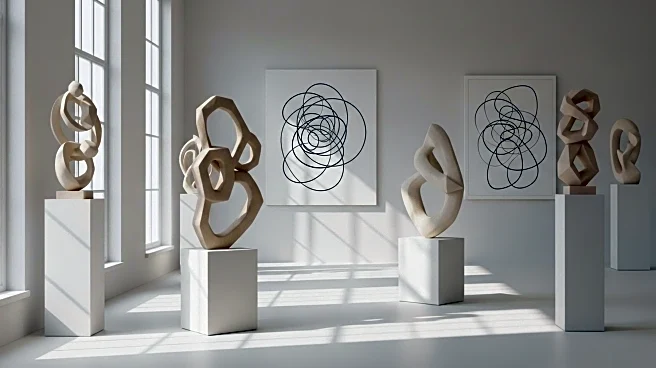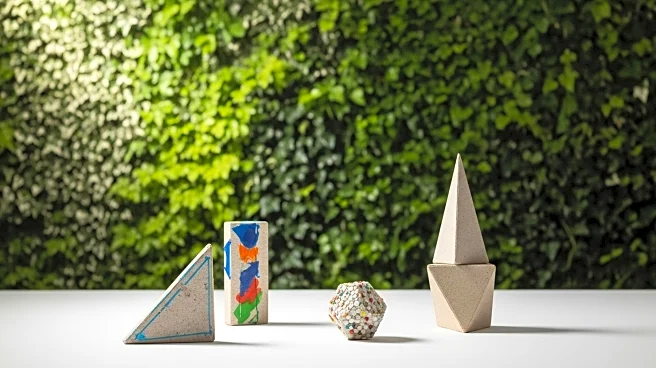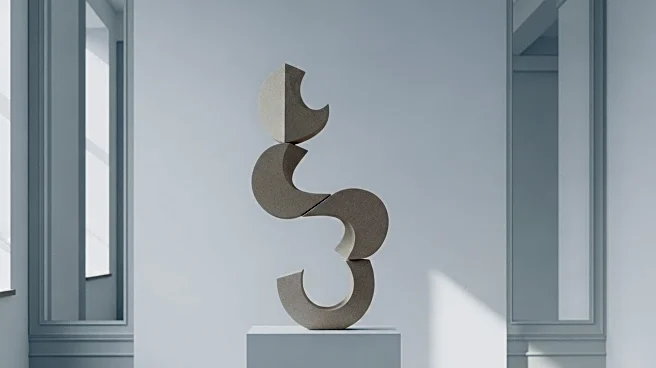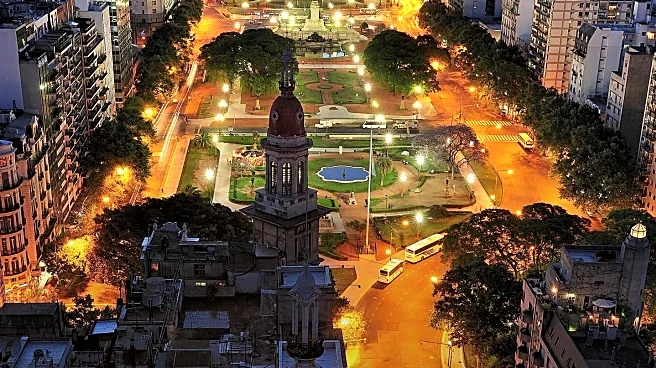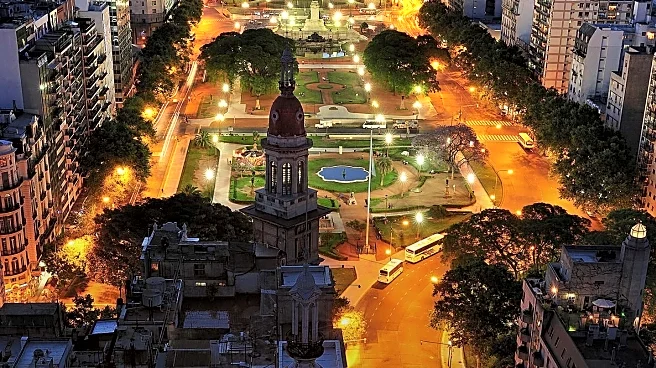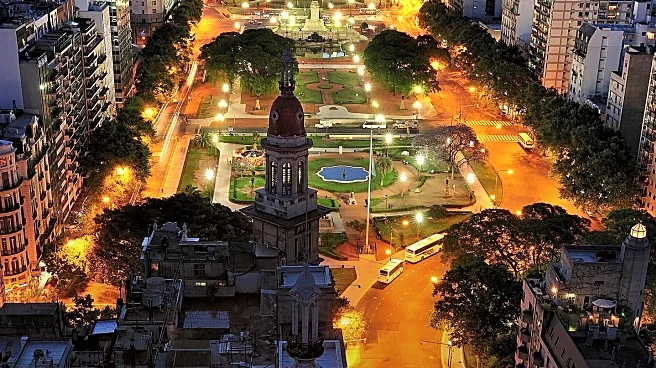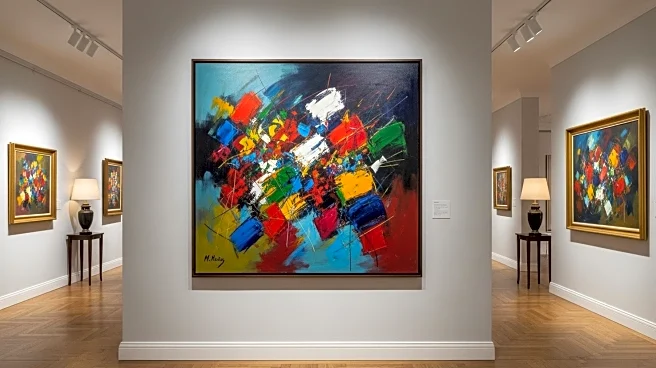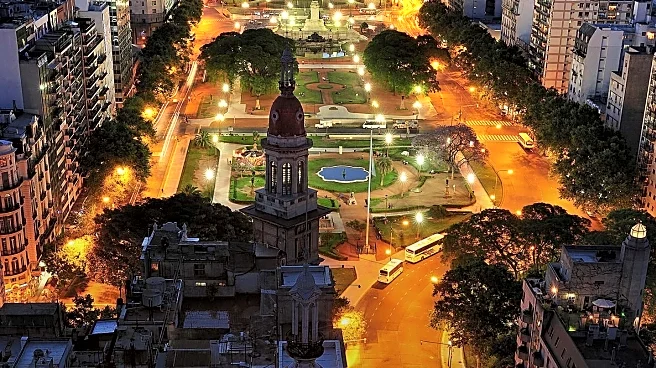What's Happening?
Andrea Zittel, an artist known for her exploration of the intersection between art and everyday life, has returned to the art world after a hiatus. Zittel is renowned for her A-Z West project, a land art initiative in the Mojave Desert that serves as a testing ground for new ways of living. This project includes experimental sleeping pods and communal kitchens, with all food, textiles, and furniture produced on-site. After stepping back from public exhibitions due to burnout and the unsustainable nature of her previous work model, Zittel has reemerged with a new body of work showcased at Sprüth Magers in Berlin. Her latest work, 'Public Performance of the Self,' reflects her renewed perspective and is guided by new rules she established to ensure her art emerges directly from everyday life, is efficient to produce, and requires minimal space for storage and transport.
Why It's Important?
Zittel's return to the art world with a focus on sustainability and intentionality highlights a significant shift in how artists can approach their practice. Her new rules emphasize the importance of creating art that is integrated into daily life and is less reliant on large-scale production and exhibition models. This approach could influence other artists and the broader art community to consider more sustainable and personal methods of art creation. By prioritizing efficiency and the integration of art into everyday activities, Zittel challenges the traditional art world’s emphasis on growth and public visibility, potentially leading to a reevaluation of how art is produced and consumed.
What's Next?
Zittel's new approach to art-making may inspire other artists to adopt similar practices, focusing on sustainability and personal expression. As her work gains attention, it could lead to broader discussions within the art community about the balance between public exhibition and personal creative fulfillment. Additionally, Zittel's emphasis on art emerging from everyday life may encourage galleries and art institutions to explore new formats for showcasing art that align with these principles. Her work could also spark interest in the integration of art and life, prompting collaborations and projects that explore this intersection further.
Beyond the Headlines
Zittel's approach raises questions about the role of art in society and how it can be used to explore personal and cultural identity. Her focus on the 'self' and the performance of everyday life challenges conventional notions of art as a separate entity from daily experiences. This perspective may lead to deeper explorations of how art can reflect and influence cultural norms and individual identities. Furthermore, Zittel's work highlights the potential for art to serve as a tool for personal reflection and societal commentary, offering new ways to engage with and understand the world.
